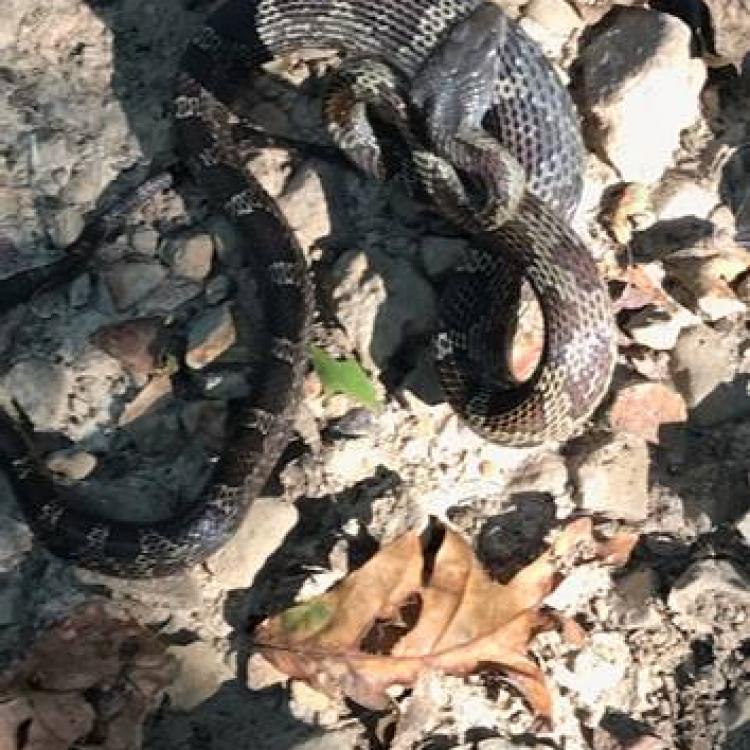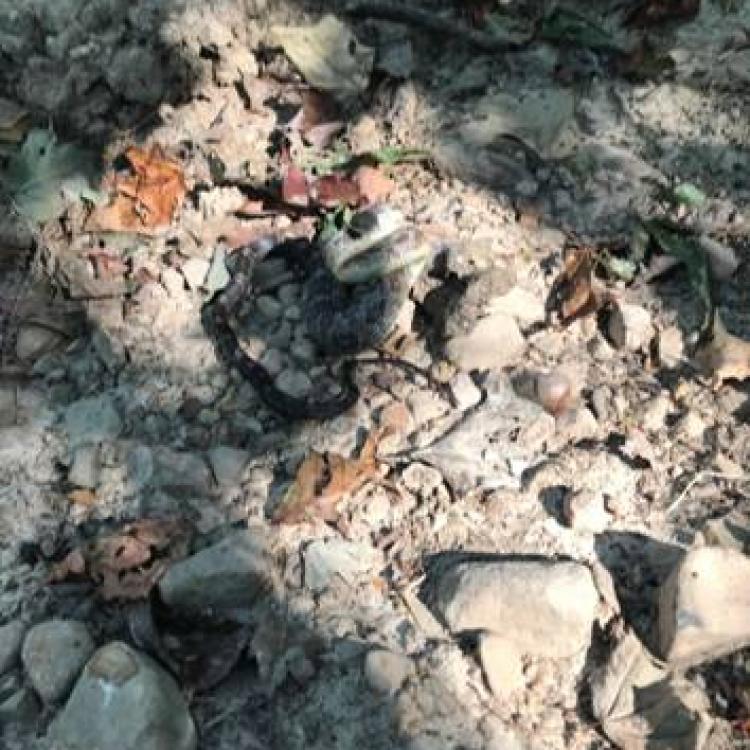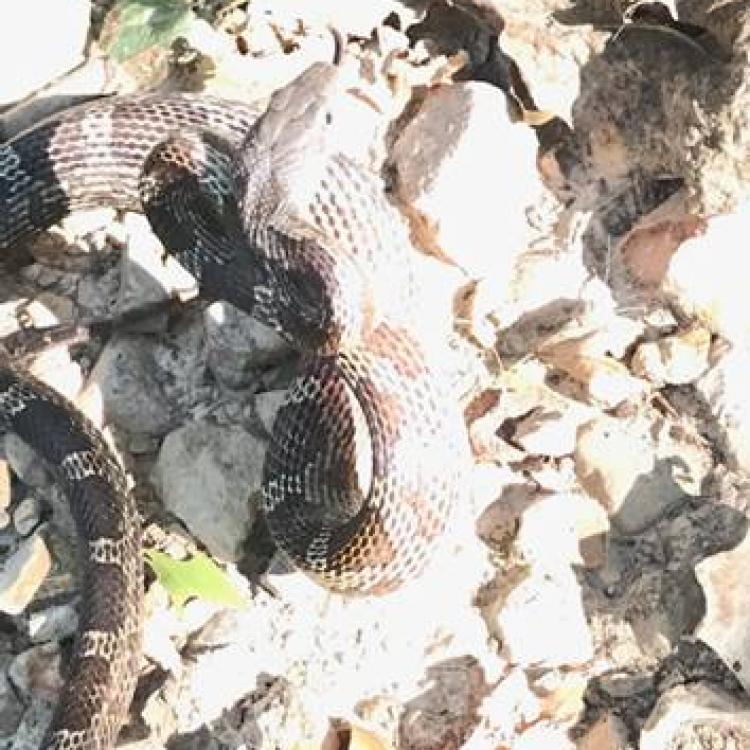Black Snake (photo by Pete Zoretic)
After he read my May 2020 “Woods, Waters & Wildlife” monthly column about state-endangered timber rattlesnakes in the print version of Ohio Cooperative Living magazine, Pete Zoretic, a member of South Central Power Company cooperative, sent me several photos of a snake he discovered on his property in Highland County. He believed it just might be a timber rattlesnake because of its behavior: “… the snake was coiling and shaking its tail,” said Zoretic.
Historically, timber rattlesnakes in Ohio were found nearly statewide, including on the Lake Erie islands. But today only four remnant populations remain, and all are located in extreme southern Ohio: Shawnee State Forest, Tar Hollow State Forest, Vinton Experimental Forest, and one area of Wayne National Forest. Zoretic’s snake was living just south of Rocky Fork Lake, outside the four areas mentioned. But was it close enough to those locations that it just might be a rattler? Stranger things have happened in the outdoors.
Wanting to be positive of the identification, I forwarded the snake photos to Ohio’s leading timber rattlesnake authority, Doug Wynn.
“It’s a black ratsnake,” said Wynn, “now officially called a gray ratsnake. They are not venomous, and are well-known for coiling, gaping their mouth, and rearing back as seen in the photos. Ratsnakes will also shake their tail, which has no rattles; the tail simply comes to a point. But if their tail is against a hard surface such as a board or even dry leaves, it sounds like a rattle. Ratsnakes essentially mimic a rattlesnake.”
Wynn went on to add that ratsnakes are also Ohio’s largest snake. Most measure about 4 feet in length, but the record is more than 8 feet! They are incredibly good tree climbers and powerful constrictors, eating mainly birds and small mammals.
“It’s the wise farmer who lets a ratsnake live in his barn so they can feed on mice,” concluded Wynn. By the way, Doug Wynn is a member of Logan County Electric Cooperative.











